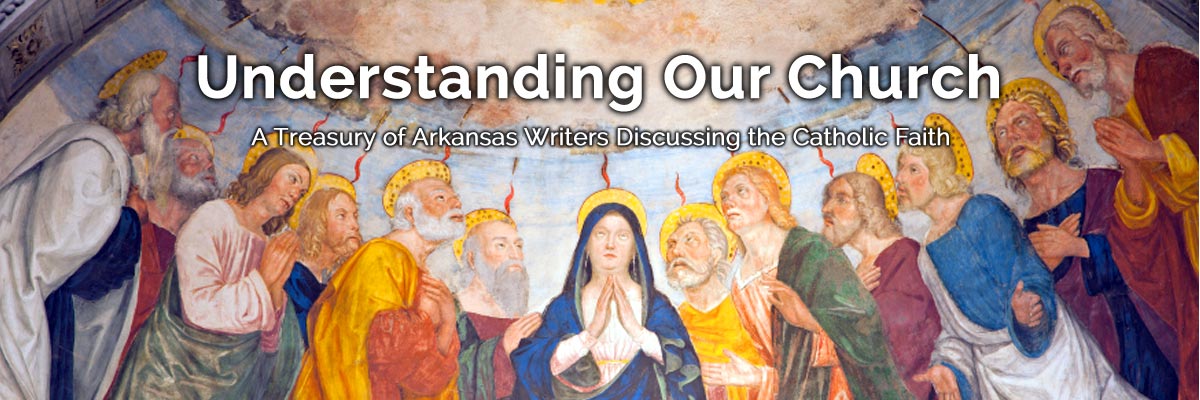Official Website of the
Catholic Diocese of Little Rock
Gestures in Mass signify unity in body, mind and spirit with Christ
Published: May 18, 2017
By Paula Standridge
St. John the Baptist Church, Hot Springs
One of the countless treasures of our Catholic faith is the fact that we worship with our whole person: body, mind and spirit. Sometimes we do this so routinely and automatically that we are not even mindful of doing it or forget why we do so.
These postures and actions of our faith, especially when performed as a common action, give witness to the fact that we are indeed the body of Christ, united in body, mind and voice.
The Mass demonstrates many of the postures and gestures we make with our bodies while raising our hearts and minds to God.
As we enter (and leave) the church, we dip our fingers in holy water and mark ourselves with the sign of the cross as a reminder of our baptism. We also genuflect as we enter our pew as a sign of adoration. As we gather in silence we separate ourselves from the outside world and prepare to enter into the sacred action of worship.
Every procession is a sign of the pilgrim Church, the body of Christ, on their way to the heavenly Jerusalem. At the beginning of Mass the priests, ministers and altar servers process to the front of the church. The gifts at offertory are brought in procession and the faithful process to receive the Eucharist.
Because it was his death on the cross that redeemed mankind, we also trace the cross on our foreheads, lips and hearts at the beginning of the reading of the Gospel praying that the word of God may be always in our minds, on our lips and in our hearts.
The priest and deacon genuflect to the tabernacle upon entering and leaving the sanctuary. The priest genuflects in adoration after he shows the body and blood of Christ to the people after the consecration, and genuflects again before inviting the people to holy Communion.
During parts of the Mass we may be standing (a sign of respect and honor) which is the stance of those who have risen with Christ and seek the things that are above. We may be kneeling which signifies penance, or sitting which is the posture of attentive listening and meditation.
Bowing signifies reverence, respect and gratitude. We bow our heads at the name of Jesus, before we receive Communion and at the words that commemorate the Incarnation during the creed. The priest and other ministers bow to the altar, which is a symbol of Christ, when entering or leaving the sanctuary.
The priest often uses the ancient prayer posture “orans.” This is when he extends his hands to the side slightly elevated — this gesture echoes Christ’s outstretched arms as he offered himself on the cross.
Singing, praying in unison and maintaining silence are all expressions of worship. Any time we are doing these functions as a group we are demonstrating ourselves as being one body united in Christ through baptism.
Anyone who has attended an ordination or the celebration of the Lord’s passion on Good Friday has witnessed prostration, the posture of deep humility. Rarely used but profound to witness or take part in, the individual lies full-length with face to the ground in humble prayer and submission to Christ.
These postures and actions of our faith, especially when performed as a common action, give witness to the fact that we are indeed the body of Christ, united in body, mind and voice.




